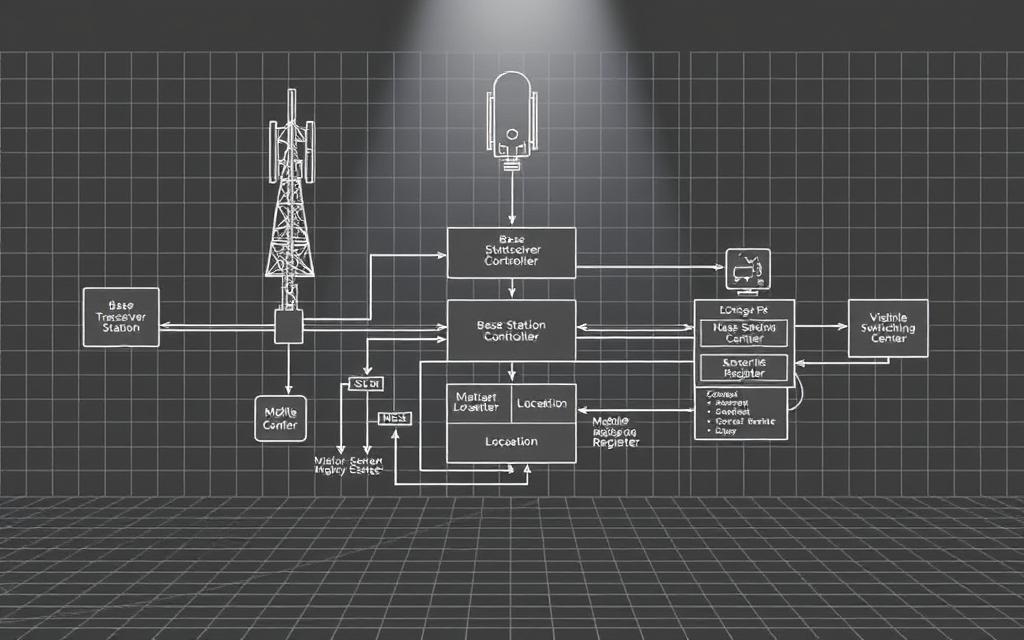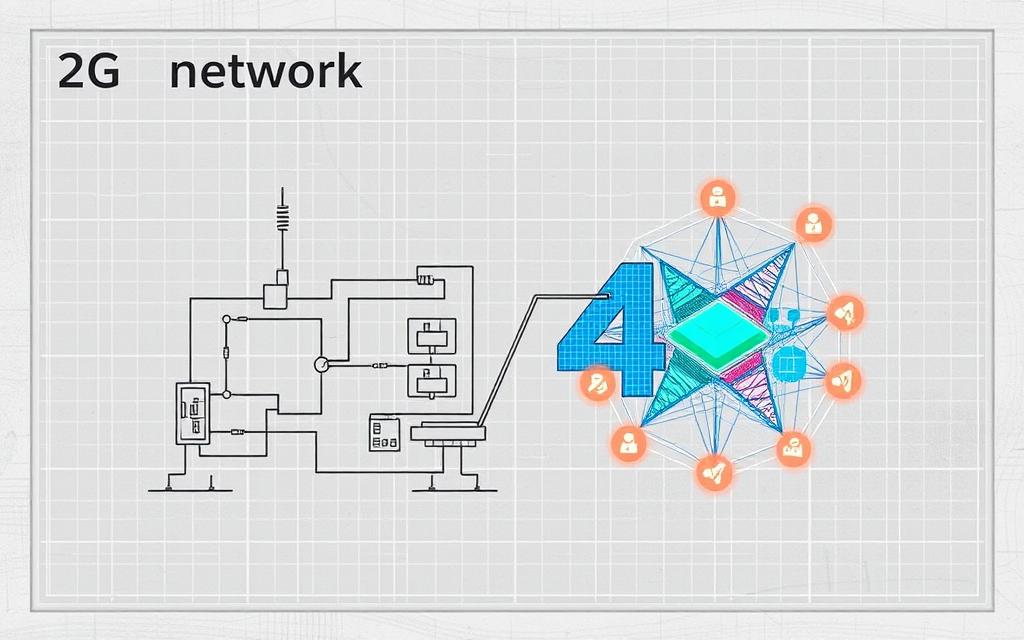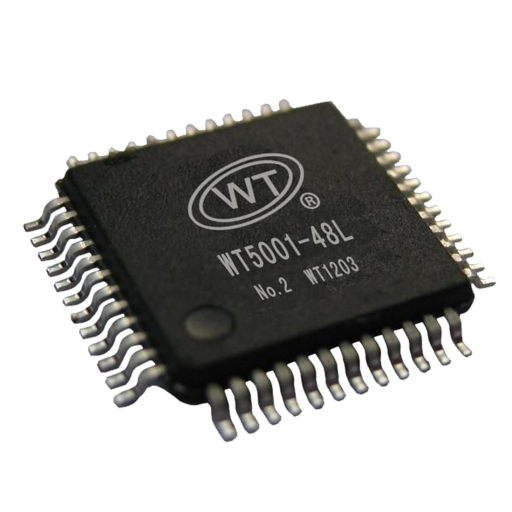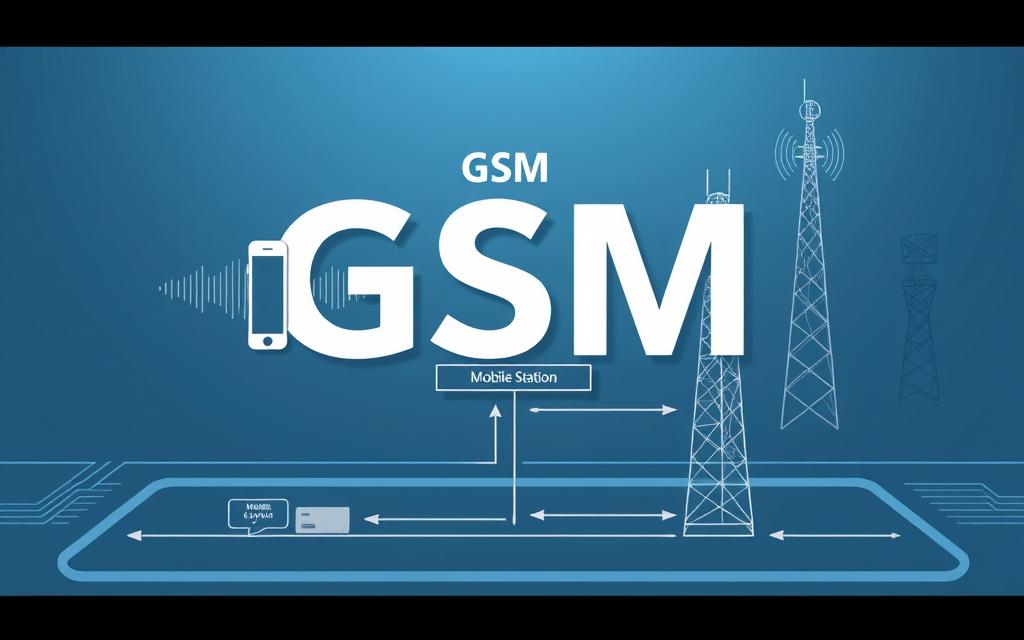The 1990s saw a big change from old analogue signals to clear digital mobile networks. This second-generation (2G) technology brought encrypted voice calls and simple data use. It set the stage for today’s smartphones.
The GSM standard was led by the European Telecommunications Standards Institute (ETSI). It was created between 1982 and 1991. It used time-division multiplexing to handle many users on one frequency band.
Three key advancements made 2G stand out:
• Digital encryption for safe talks
• SMS messaging
• Packet data through upgrades like GPRS
In North America, CDMA was used, but GSM was global. This meant people could use their phones abroad for the first time in the early 1990s.
Even though 3G and 4G are faster, 2G’s impact is seen in today’s networks. It’s key to how we communicate now, thanks to its work in signal compression and frequency reuse.
The Birth of 2G: Revolutionising Mobile Communication
In the early 1990s, a big change happened in mobile phones. Engineers moved from old analogue signals to new digital ones. This change didn’t just make calls clearer. It also set the stage for today’s smartphones with better security and standard ways of working.
From Analogue to Digital: The 1G to 2G Transition
Limitations of first-generation mobile systems
Old mobile networks had big problems:
- Voice calls were easy to listen in on
- Signal quality was not the same everywhere
- They couldn’t handle many users at once
As more people used mobiles, these issues became more obvious. Old systems couldn’t grow fast enough, so new digital ones were needed.
ETSI’s GSM standard development (1982-1991)
The European Telecommunications Standards Institute worked for nine years on GSM. They hit important milestones like:
| Year | Development | Impact |
|---|---|---|
| 1987 | 13 nations sign GSM MoU | Created a plan for how to use it |
| 1989 | Specification freeze | Allowed making equipment |
| 1991 | First commercial launch | Proved it worked well |
Key Technological Innovations
Digital voice encoding and encryption
2G brought GSM encryption algorithms that:
- Made voice data hard to listen to
- Used special ways to check who was calling
- Started SMS messages
TDMA vs CDMA multiplexing approaches
The time division versus code division debate was key for 2G:
| Aspect | TDMA | CDMA |
|---|---|---|
| Spectrum use | Time-sliced channels | Code-based sharing |
| Voice quality | Clearer at full signal | Better in weak areas |
| Adoption | 85% global markets | Strong in Americas/Asia |
Commercial Deployment Milestones
Radiolinja’s 1991 GSM launch in Finland
Finland’s Radiolinja was the first to use 2G. They started with:
- Digital voice calls
- Roaming agreements
- Basic SMS messages
Global adoption patterns through the 1990s
By 1997, GSM had 100 million users in 120 countries. Vodafone’s UK network grew fast, reaching 1 million users in 18 months.
Core Technical Specifications of 2G Networks
2G networks had a big impact on society. They also set the stage for today’s mobile technology. This part looks at what made 2G networks tick, from radio waves to switching centres.
Frequency Bands and Signal Management
2G networks mainly used 900MHz and 1800MHz spectrum ranges. These frequencies were chosen for their good balance of coverage and signal strength. In Europe, 900MHz was used for rural areas, while 1800MHz was better for cities.
GMSK Modulation Efficiency
The Gaussian Minimum Shift Keying (GMSK) method improved signal quality. It was a digital method that:
- Used 40% less power than QAM
- Reduced interference between channels
- Allowed stable connections at speeds up to 270km/h

Data Handling Capabilities
2G’s circuit-switched data transmission offered speeds of 9.6-14.4kbps. This was a big deal for early web users. The first SMS in 1992 used spare channels for messages, starting with 160 characters. Ericsson engineer Matti Makkonen said:
“We never imagined texting would become a cultural phenomenon. It was simply a way to utilise unused bandwidth.”
GPRS: The Precursor to Mobile Internet
Later, GPRS was introduced, increasing theoretical speeds to 40kbps. This ‘2.5G’ upgrade used:
- Packet switching instead of dedicated circuits
- Statistical multiplexing for better bandwidth use
- Four coding schemes (CS-1 to CS-4) for error control
Network Architecture Essentials
The BSS MSC architecture split radio management from call routing. Base Station Subsystems (BSS) handled tower communications, while Mobile Switching Centres (MSC) managed:
- Call setup/termination
- Subscriber authentication
- Handovers between cells
Component Interdependence
This split architecture allowed for handling voice and data at the same time. BSS components processed radio signals, while MSCs connected with PSTN networks. This design is seen in today’s 4G/5G networks.
2G’s Transformational Impact on Society
2G’s technical achievements were just the start. It changed social norms and opened up new economic opportunities. This digital leap transformed how billions communicate, do business, and access information.
Democratising Mobile Connectivity
The prepaid mobile revolution started with Nokia’s affordable handsets. These devices were priced under £50 and came with pay-as-you-go plans. This made mobile phones accessible to more people, without the need for credit checks or long contracts.
Reduced device costs and form factors
By 1999, mobile phones were 60% cheaper than in the 1G era. The Nokia 5110, a compact flip phone, sold over 160 million units worldwide. It replaced the bulky car-mounted units of the past.
Emergence of prepaid mobile services
Vodafone introduced ‘Pay & Go’ in 1996. This move made mobile phones more accessible. Within three years, prepaid users outnumbered contract subscribers in Europe. This opened up new markets for students and low-income earners.
New Communication Paradigms
2G introduced new ways of communicating, like the SMS social impact. The 160-character limit led to creative use of abbreviations, such as ‘GR8’ and ‘LOL’.
SMS culture and text-based interactions
In 1999, Britain saw 50 million texts on Christmas Day. Teens created ‘text speak’, while businesses used SMS for alerts. This practice is common in delivery notifications today.
International roaming capabilities
The 1992 EU roaming agreement allowed executives to stay in touch across borders. Though expensive at first (£1.20/minute), it paved the way for global business mobility. This was decades before 4G’s promise of ‘work from anywhere’.
Foundation for Mobile Data Services
Despite WAP protocol limitations like slow speeds, 2G introduced the first mobile internet. Banking institutions quickly saw its value for financial inclusion.
WAP (Wireless Application Protocol) implementation
Early users accessed basic web pages through WAP browsers. Though images were pixelated, the technology taught users to be patient. This patience helped with the adoption of 3G later on.
Early mobile banking applications
In 2002, Kenya’s M-Pesa system used 2G networks for money transfers. It showed how basic data services could bypass traditional banking, helping developing nations.
2G vs 3G/4G: Understanding Technological Evolution
2G was the start of mobile connectivity. But 3G and 4G changed the game. They brought faster speeds and new features. Let’s look at how these changes affect us today.

Performance Comparison
Data speed differences: kbps vs Mbps show the big leap. 2G was slow, at 50 kbps. It was good for texts and calls but not for today’s apps.
3G brought 2 Mbps speeds, and 4G LTE reached 100 Mbps. This made streaming HD videos and using cloud services possible.
Spectral efficiency improvements also played a big role. 4G can carry 3x more data than 2G in the same space. This is key as more people use their phones.
Architectural Advancements
The move from circuit-switching to packet-switching saved a lot of energy. 2G used a lot of power when not in use. 3G and 4G use power only when needed, saving up to 40% in cities.
All-IP network implementations in 4G made data easier to manage. It’s different from 2G, which mixed voice and data. This change helps new tech but leaves old IoT devices behind.
Legacy Support Challenges
2G network sunsetting timelines vary worldwide. AT&T stopped 2G in 2017, but Vodafone is keeping it for now. T-Mobile will stop 2G in the US by 2025. But in Europe, 2G is used for IoT legacy systems in farming and utilities.
IoT device dependency considerations make it hard to stop 2G. Many smart meters and trackers need 2G. Changing these systems is expensive. This is why 2G is not yet gone, even though it’s not as good as newer tech.
2G’s Enduring Legacy in Modern Telecommunications
The world of mobile phones is shaped by 2G systems, even though they’re old. They paved the way for our always-connected lives with key innovations. The GSM’s role was huge, setting global standards that changed how we use mobile phones.
Today, over 60 countries use 2G networks, mainly for their cost and simplicity. It shows how early tech became a part of our lives. For example, farmers in India get crop prices via SMS, and smart meters in Europe send data through GSM.
Modern networks like 4G and 5G owe a lot to 2G. They took ideas like SIM cards and encryption from 2G. These ideas are now key for mobile banking and IoT.
There’s a big debate about shutting down old 2G networks. It’s a tough choice because it could leave some people without access. It’s a challenge that started with 2G’s own impact on society.
The GSM’s lasting impact is making mobile phones universal. It turned phones from luxury items to must-haves. Ending 2G is just a step in the ongoing story of mobile connectivity.







